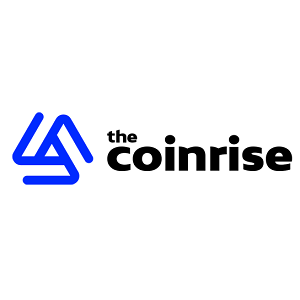Binance (BNB-USD): Its Future Through On-Chain Metrics
4 min read
Summary BNB’s price evolution is tied to blockchain activity, with key metrics like active addresses, transaction volume, and gas consumption being crucial indicators. Daily active addresses historically predict price trends; recent decoupling suggests speculative price movements without sustained user interest. Transaction volume shows a shift from DeFi and payments to wallet-to-wallet transactions, indicating less robust ecosystem growth. Future BNB price hinges on increased gas consumption and active addresses in DeFi and NFT sectors; regulatory risks could impact long-term prospects. The evolution of the Binance Coin (BNB) price has a close relationship with key activity indicators on its blockchain. To forecast the future direction of BNB’s price, it is important to examine underlying trends in key indicators such as active addresses, transaction volume and gas consumption. Daily Active Addresses: Thermometer of Interest Node Analytica Node Analytica Historically, daily active directions have acted as a leading indicator of asset interest. During the periods marked in green on our charts, increases in active directions usually anticipate a significant appreciation in the asset price. A clear example of this was between 2020 and 2021, when a sharp increase in active directions accompanied a notable rise in BNB’s price. However, from 2022 until today, we observe a partial decoupling between the two variables. Although BNB reached historical highs, active directions failed to sustain consistently at previous levels, suggesting a significant speculative component in the past appreciation. Between January 2022 and December 2022, BNB’s daily active addresses fell by 33%, while the price rose by 54% (from USD 350 to USD 540). This phenomenon coincides with the launch of new pairs on Binance and the development of its zero-fee campaigns for transfers with BNB. Attracting speculative flows in specific periods (buying peaks before announcements), without the day-to-day adoption (real user – value) being sustained. Overlaying the two graphs shows a USD 200 divergence in price as the directions decreased by a third, suggesting an excess of financial demand over usage demand. Transaction Volume: Real Usage Indicator Node Analytica Node Analytica Analysing the sectoral distribution of daily transactions in the BNB chain, we can observe that there is a strong initial participation of the decentralised financial sector ( DEFI ) and payments, especially between the years 2021 and 2022. Since then, there has been a significant volume reduction in these recently discussed sectors. On the other hand, sectors such as gaming and NFT Apps showed sporadic spikes in activity, albeit without sufficient consistency to sustain a prolonged price rise. Currently, the dominant sector in the BNB chain remains wallet-to-wallet, reflecting mostly simple transactions and not necessarily robust growth in the value-adding ecosystem. Gas Consumption: The Economic Health of the Network Node Analytica Node Analytica Gas consumption, measured in USD, gives us a direct insight into the real economic ‘demand’ for executing smart contracts in the BNB chain. Between late 2020 and early 2022, this gas consumption spiked, correlating positively (0.80) with substantial increases in the asset price. However, from mid-2022 to the present, gas consumption has largely decreased, evidencing lower demand in the interaction with complex smart contracts, possibly due to a migration of this demand to other networks. Average daily gas consumption on the BNB blockchain went from USD 8.2M in June 2022 to USD 2.7M in June 2023 (down 67%). This USD 5.5 M drop is partly explained by the migration of DeFi volumes to networks such as Arbitrum (LTV volume on Arbitrum +45% in 2023) and strong competition from Solana, whose contracts cost 80% less in fees. In addition, Ethereum Layer 2 initiatives absorbed some of the activity, while Binance’s incentives for dApps did not reach pre-bear market volumes. Price Forecast and Conclusions Considering all the above metrics, BNB’s price evolution will depend mainly on two factors in our view: (1) The sustained recovery of gas consumption (higher actual usage of applications) and (2) The significant and sustained increase in active directions, especially from key sectors such as DeFi or NFT. We believe that, in a positive scenario, where there is a rebound in activity in decentralised applications, BNB could return to levels above USD 400-500 by the end of 2025. This is because in previous times (2022), when activity in decentralised applications was at record highs, the Binance token reached that price. So we think it is feasible that this could happen again if the above conditions occur. On the other hand, if current usage (mostly wallet-to-wallet) continues to dominate without a noticeable recovery in decentralised applications, the price trend could remain flat or even decline. Strategic Recommendations For long-term investors, it is useful to monitor the evolution of gas consumption and active addresses by specific sectors (mainly DeFi and NFT). This can be done using platforms such as Glassnode or Dune Analytics. They should set up alerts when active addresses accumulate +10% in four weeks compared to the previous month. A drop > -10% in gas consumption in two weeks signals bearish risk. For short-term traders and speculators, the green periods identified on our charts can be strategic entry points, as long as they are supported by real increases in activity. These periods are rises of more than 10% in metrics over 4 week periods. Personally, I believe that the increasing integration of BNB into real payments (Binance Pay, BNB Visa) can reverse some of the decline in gas if incentives are stabilised. However, the lack of top-tier DeFi projects on the Binance blockchain limits its ability to grow sustainably.

Source: Seeking Alpha



